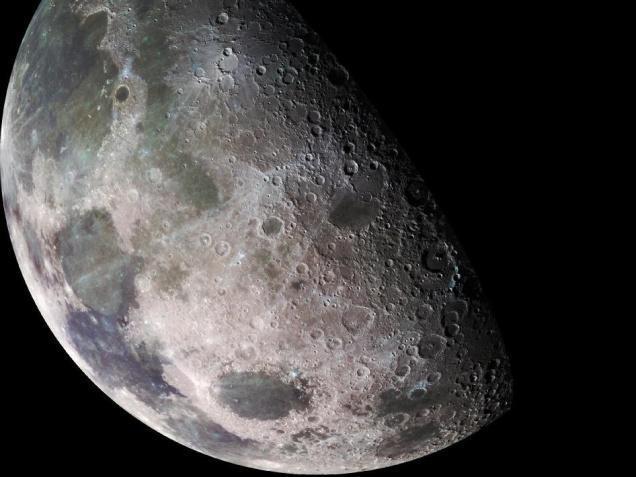May 28, 2013
New York: Around 25 per cent of the Moon’s impact craters may preserve substantial pieces of the asteroids that created them, scientists claim.

The findings suggest that scientists may have to work a little harder to figure out what the Moon is made of. Photo: NASA
May 28, 2013
New York: Around 25 per cent of the Moon’s impact craters may preserve substantial pieces of the asteroids that created them, scientists claim.

The findings suggest that scientists may have to work a little harder to figure out what the Moon is made of. Photo: NASA
The findings suggest that scientists may have to work a little harder to figure out what the Moon is made of, researchers said.
“Future studies of the moon’s composition will have to show that exposed surface rocks really come from the Moon and were not delivered by impacts, especially for unusual or exotic minerals,” said co-author Jay Melosh of Purdue University.
Melosh and his colleagues, led by Zhong Yue of Purdue and the Chinese Academy of Sciences’ Institute of Remote Sensing Applications in Beijing, used computer models to simulate the formation of lunar craters by asteroid impacts, ‘SPACE.com’ reported.
They determined that one-quarter of space rock strikes on the Moon likely occur at a velocity of 43,130 km per hour or less.
Other simulations performed by the team showed that, at such impact speeds, little asteroid material is vaporized and lots of it is hurled against the walls of the newly formed crater.
If the crater is at least 20 kilometers or so wide, impactor remnants tend to accumulate in a central peak as the crater collapses under the Moon’s gravity.
The findings of the new study, published in the journal Nature Geoscience, could explain the occurrence of minerals called spinels and olivines in the central peaks of large lunar craters such as the 93 km Copernicus.
Spinels and olivines are common in many asteroids, so it’s possible that these and other minerals that scientists had assumed were indigenous to the Moon were actually delivered via space rock strikes, researchers said.
“We cannot infer the deep composition of the Moon from rocks in the centres of large craters without more care than has been used to date,” Melosh told the website in an email.
The findings also raise other interesting theories. Some material blasted off Earth by colossal impacts long ago is believed to have hit the Moon at relatively slow velocities.
“This raises the possibility of finding early Earth material, ejected by collisions billions of years ago, in massive deposits on the Moon, and suggests yet another explanation for the spinels: that they are deposits derived from the Earth’s upper mantle, emplaced long ago on to the Moon and reworked,” Erik Asphaug of Arizona State University wrote in an accompanying commentary in the same issue of Nature Geoscience.
Courtesy: PTI











































































































